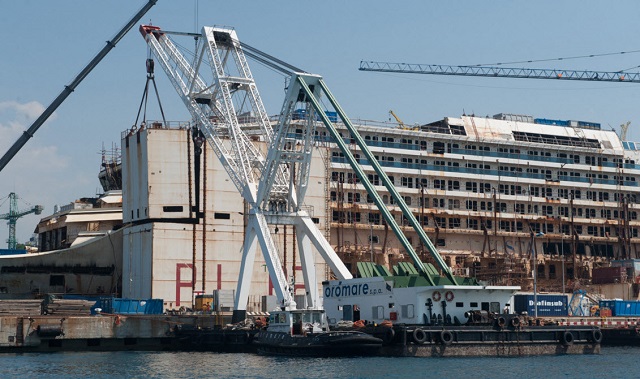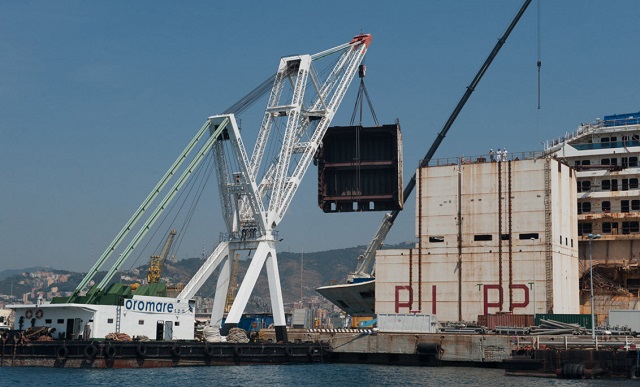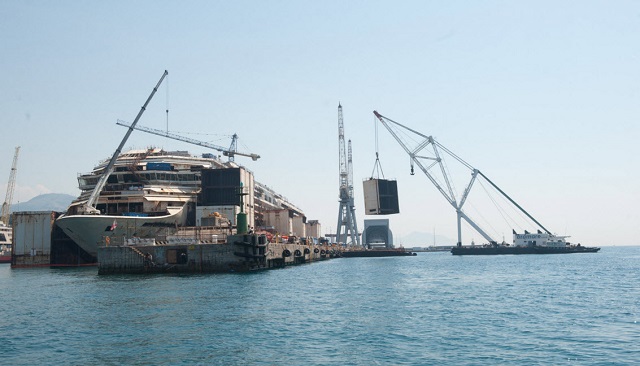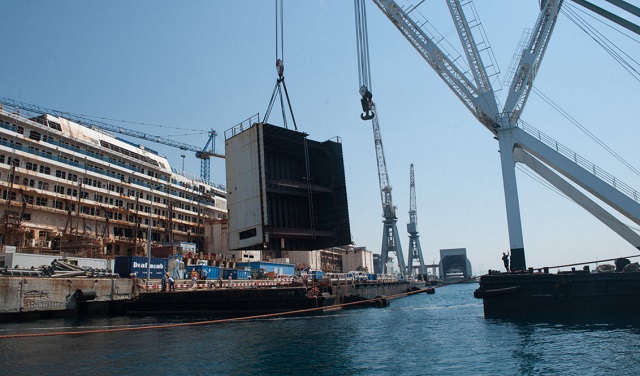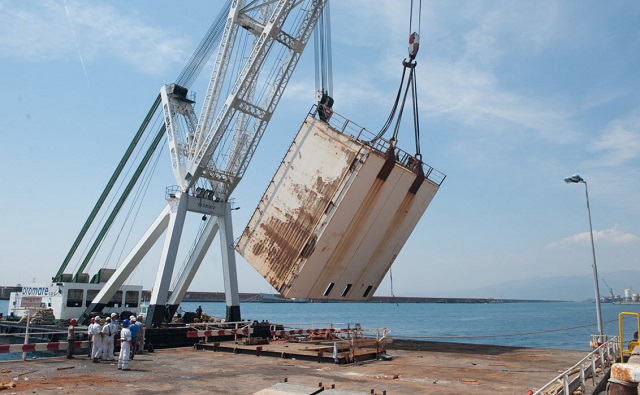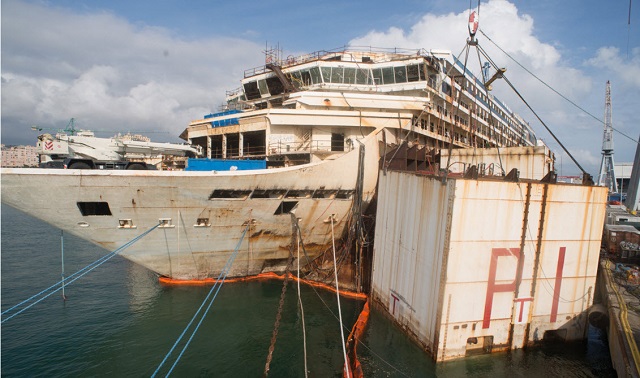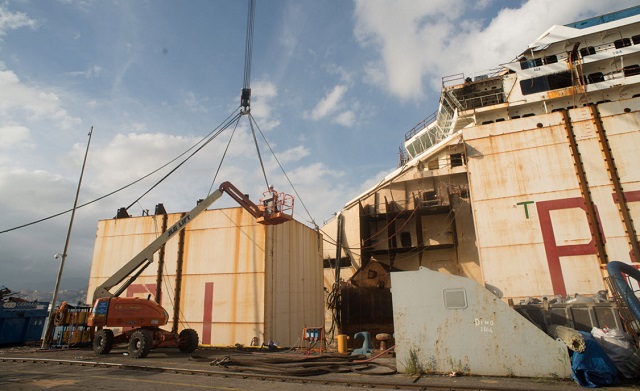[Photos] First Caissons Removed from Costa Concordia Wreck
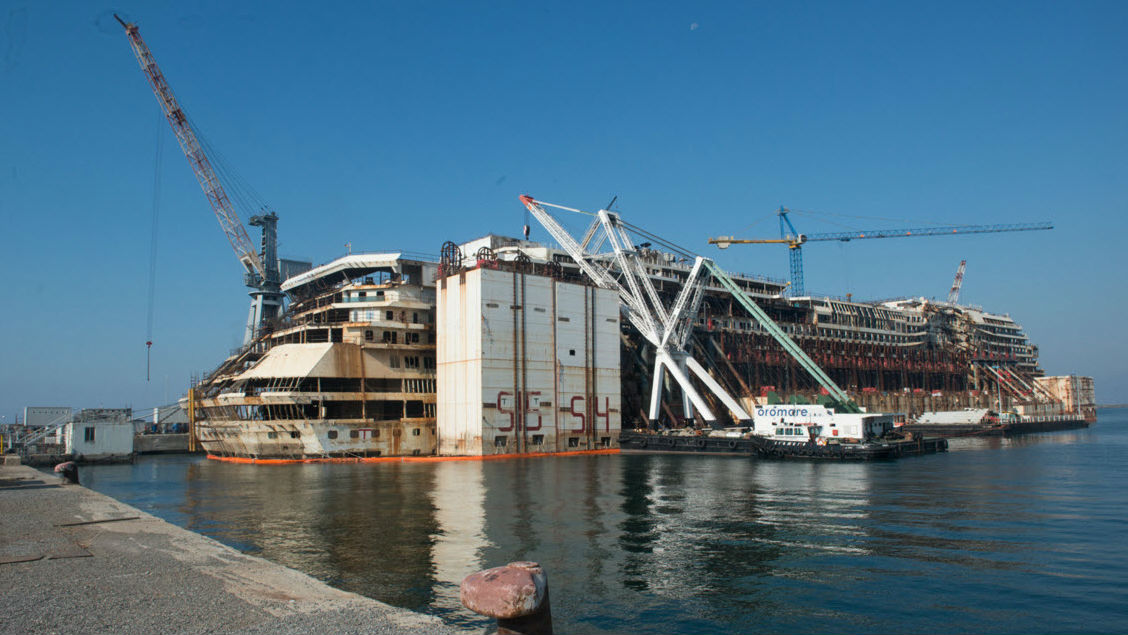
The first two caissons, or sponsons, have been removed from the wreck of the Costa Concordia. The caissons were used in the parbuckling of the wreck and have since been keeping it buoyant and upright during the dismantling process.
The vessel has now been stripped of enough material that the caissons could be removed. So far, over 7,000 tons of steel has been removed and sent for recycling. Most recently dismantling activities have focused on decks 8 and 7 and removal of interiors from decks 2 and 1.
Around 200 technicians are currently continuing with the stripping of deck 1, with the bridge to follow.
Once the vessel is light enough to remove all the caissons, it will be moved to drydock for subsequent dismantling.
The Costa Concordia ran aground in the waters surrounding Giglio Island, Italy, in January 2012, and was parbuckled, refloated and towed away by the TITAN/Micoperi team in September 2014. The caissons were installed on the vessel in April 2013 using the SAL Heavy Lift vessel Svenja.
The salvage was the largest, most technically demanding project of its kind in history.
The wreck was towed to Molo ex Superbacino in May 2015 where it is being recycled by the Ship Recycling Consortium – a group formed by Saipem (51 percent) and San Giorgio del Porto (49 percent). The dismantling project is expected to take over a year and to cost $114 million.
Around 50,000 tons of steel and 2,000 tons of copper are expected to be recovered from the vessel. Prior to arrival at Molo ex Superbacino over 5,700 tons of furniture and interior equipment was removed so the wreck could be towed over the breakwater of the Prà Voltri Port to reach the dismantling dock. Around 80 percent of the vessel is anticipated to be able to be recycled.
